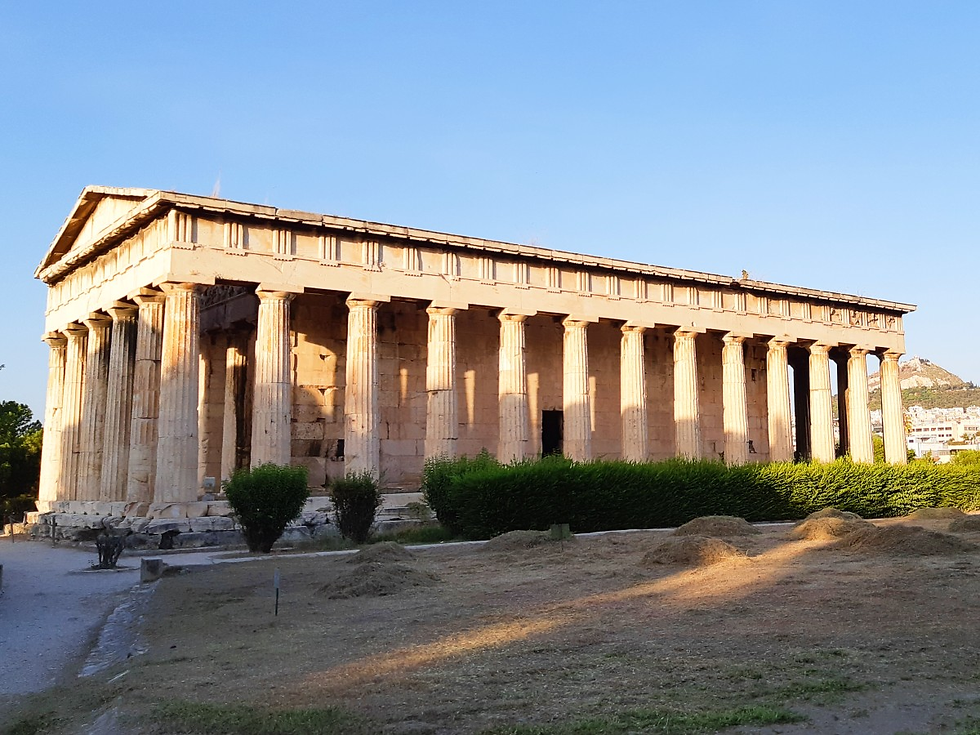Visiting the Temple of Poseidon at Cape Sounion
- Johnny Ka
- Aug 10, 2023
- 3 min read
Introduction:
Perched on a rocky promontory overlooking the Aegean Sea, the Temple of Poseidon at Cape Sounion stands as a testament to ancient Greek architecture and mythology. This review invites you to embark on a captivating journey to this iconic site, where history, beauty, and myth intertwine. Join us as we explore the allure of the Temple of Poseidon and uncover the secrets of this magnificent archaeological treasure.

The Mythical Connection:
Cape Sounion holds a special place in Greek mythology, as it is believed to be the spot where the sea god Poseidon stood when he surveyed his domain. According to legend, the temple was erected as a tribute to Poseidon, the mighty ruler of the seas. As you approach the temple, you can feel the mystical aura and appreciate the significance of this mythical connection.
Spectacular Sunset Views:
One of the highlights of visiting the Temple of Poseidon is the opportunity to witness breathtaking sunset views. As the sun begins to dip below the horizon, casting its golden hues across the sky, the temple takes on an ethereal glow. Find a comfortable spot along the promontory and watch in awe as the sun sinks into the sea, painting a picturesque backdrop for the ancient ruins.
Architectural Grandeur:
The Temple of Poseidon showcases the magnificence of ancient Greek architecture. Although partially ruined, the remaining Doric columns and the imposing structure evoke a sense of awe and admiration. Take a moment to study the intricate details, observe the symmetry of the design, and imagine the grandeur that once characterized this sacred place.
Panoramic Sea Views:
Perched on the southernmost tip of Attica, the Temple of Poseidon boasts panoramic views of the Aegean Sea. As you stand atop the promontory, you are greeted by a vast expanse of shimmering blue waters. The combination of the temple's architectural splendor and the awe-inspiring seascape creates a harmonious union that is truly mesmerizing.
Historical Significance:
Beyond its mythical allure, the Temple of Poseidon holds great historical significance. Built during the 5th century BCE, it served as a beacon for sailors, guiding them safely through the treacherous waters of the Saronic Gulf. Imagine the ships that once sailed these waters, seeking solace and protection from the mighty Poseidon.

Exploring the Site:
Take your time to explore the temple grounds, tracing the footsteps of ancient worshippers and pilgrims. Walk along the ancient walls, observe the remains of the altar, and immerse yourself in the atmosphere of this sacred place. Reflect on the historical events and the spiritual devotion that shaped the temple's legacy.
Temple of Poseidon Museum:
Adjacent to the archaeological site, the Temple of Poseidon Museum provides further insight into the history and significance of the temple. Discover artifacts, statues, and inscriptions that offer a glimpse into the religious practices and cultural context of ancient Greece. The museum enriches your understanding of the temple's cultural and archaeological importance.
Coastal Walks and Beaches:
After exploring the temple, take advantage of the stunning coastal surroundings. Embark on a leisurely walk along the rugged coastline, breathing in the fresh sea air and marveling at the rugged beauty of the landscape. If time permits, you can also visit nearby beaches such as Legrena or enjoy a refreshing swim in the crystalline waters of the Aegean.

Conclusion:
A visit to the Temple of Poseidon at Cape Sounion is a journey of discovery, blending ancient mythology, architectural splendor, and breathtaking natural beauty. As you stand in the presence of this ancient marvel, you can't help but feel a connection to the past and a sense of wonder at the enduring legacy of ancient Greece. Whether you come to witness a spectacular sunset or to delve into the rich history of the site, the Temple of Poseidon at Cape Sounion promises an unforgettable experience that will leave you in awe of the ancient world and its enduring allure.




Comments